
I Am Autistic: a Workbook: Sensory Tools, Practical Advice, and Interactive Journaling for Understanding Life with Autism (By Someone Diagnosed With it): Sensory Tools, Practical Advice, and Interactive Journaling for Understanding Life with Autism (By Someone Diagnosed With it)
by
Chanelle Moriah
Published 25 Oct 2022
I am trying to fit in and I am unsure if my answer is socially correct. My mind is genuinely blank. I need time to figure it out. I am over all of the questions. I am having trouble figuring out how I feel. I don’t know Object permanence Some individuals may experience a degree of lack of object permanence. This is your ability to remember things that you cannot see. I am not referring to object permanence in the same way as an infant is not aware that things they cannot see still exist, but it is similar in the sense that if you cannot see something, you might forget about it entirely. I think this is more common with ADHD, but there is a lot of overlap.
…
If someone else moves or cleans up our items, we can find that really overwhelming, because we may have a hard time remembering what we are even looking for, since we can’t see it. This is also one reason why we may not take the initiative when it comes to tasks that involve other people’s belongings. I don’t want you to move my things, so I won’t move yours—unless you ask me to, and you tell me where everything goes. This lack of object permanence, unfortunately, sometimes carries over to things like text messages or even people. Story memory Story memory refers to how well an individual can recall a story that they have either read or heard. Individuals with poor story memory may not be able to answer questions in relation to what they have just read or heard.
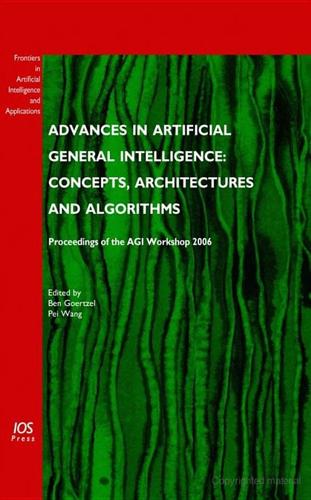
Advances in Artificial General Intelligence: Concepts, Architectures and Algorithms: Proceedings of the Agi Workshop 2006
by
Ben Goertzel
and
Pei Wang
Published 1 Jan 2007
It turns out to be possible to create a Piaget-like theory of stages of cognitive development that is specifically appropriate to uncertain reasoning systems like PLN, in which successive stages involve progressively sophisticated inference control: simple heuristic control (the infantile stage); inductive, history-based control (the concrete operational stage); inference-based inference control (the formal stage); and inference-based modification P. Wang and B. Goertzel / Introduction: Aspects of Artificial General Intelligence 15 of inference rules (the post-formal stage). The pragmatic implications of this view of cognitive development are discussed in the context of classic Piagetan learning problems such as learning object permanence, conservation laws, and theory of mind. In a general sense, quite apart from the specifics of the developmental theory given in Goertzel and Bugaj’s chapter, one may argue that the logic of cognitive development is a critical aspect of AGI that has received far too little attention. Designing and building AGI’s is important, but once they are built, one must teach them and guide their development, and the logic of this development may not be identical or even very similar to that of human infants and children.
…
For this reason a number of contemporary theorists taking a computer science [1] or dynamical systems [2-4] approach to developmental psychology have chosen to adopt the Piagetan B. Goertzel and S.V. Bugaj / Stages of Cognitive Development 175 framework in spite of its demonstrated shortcomings, both because of its conceptual strengths and for lack of a coherent, more rigorously grounded alternative. Table 1 Stage Example Infantile Object Permanence Concrete Conservation of Number, Theory of Mind Formal Systematic Experimentation Reflexive Correction of Inference Bias The work described here involves the construction of a theory of cognitive development inspired conceptually by Piaget’s work, but specifically applicable to AI systems that rely on uncertain logical inference as a primary or highly significant component.
…
Inference control is very simple during the infantile stage (Fig. 3) as it is the stage during which both the most basic knowledge of the world is acquired, and the most basic of cognition and inference control structures are developed as the building block upon which will be built the next stages of both knowledge and inference control. Another example of a cognitive task at the borderline between infantile and concrete cognition is learning object permanence, a problem discussed in a Novamente/AGI-SIM context in [46]. Another example is the learning of word-object associations: e.g. learning that when the word “ball” is uttered in various contexts (“Get B. Goertzel and S.V. Bugaj / Stages of Cognitive Development 183 me the ball,” “That’s a nice ball,” etc.) it generally refers to a certain type of object.
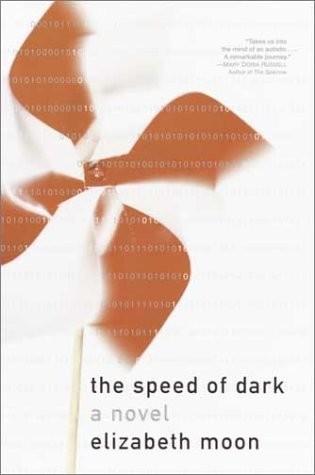
The Speed of Dark
by
Elizabeth Moon
Published 1 Jan 2002
Lou-now wants to climb into a soft, dark place and not come out until morning. It is morning. It is still morning and we—I—have not had lunch. Object permanence. What I need is object permanence. What Lou-before read about it in a book—a book heread, a book I do not quite remember but also do remember—comes back to me. Babies don’t have it; grownups do. People blind from birth, whose sight is restored, can’t learn it: they see a table morphing from one shape to another as they walk by. Page 223 I was not blind from birth. Lou-before had object permanence in his visual processing. I can have it, too. I had it, until I tried to read the story… I can feel the pounding of my heart slow down, sink below awareness.
…
It is Jim, the orderly who has taken care of me most days. The music fades, but I can feel it rippling under my skin, soothing. “I’m fine,” I say. I can tell that my voice sounds relaxed. “I just needed a break, isall. ” “Better come out, buddy,” he says. “They’re startin ’ to freak out here.” Sighing, I stand up and unlatch the door. Object permanence retains its shape as I walk out; the walls and floor stay as flat as they should; the gleam of light off shiny surfaces doesn’t bother me. Jim grins at me. “You’re okay then, buddy?” “Fine,” I say again.Lou-before liked music. Lou-before used music to steady him… I wonder how much of Lou- before’smusic I could still remember.
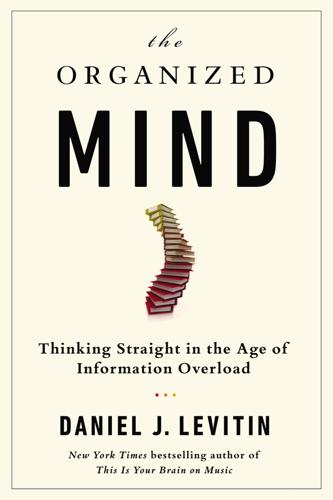
The Organized Mind: Thinking Straight in the Age of Information Overload
by
Daniel J. Levitin
Published 18 Aug 2014
Of course many species respond to time by building nests, flying south, hibernating, mating—but these are preprogrammed, instinctive behaviors and these actions are not the result of conscious decision, meditation, or planning. Simultaneous with an understanding of now versus before is one of object permanence: Something may not be in my immediate view, but that does not mean it has ceased to exist. Human infants between four and nine months show object permanence, proving that this cognitive operation is innate. Our brains represent objects that are here-and-now as the information comes in from our sensory receptors. For example, we see a deer and we know through our eyes (and, downstream, a host of native, inborn cognitive modules) that the deer is standing right before us.
…
Organizing information: Principles and practice. London, UK: Clive Bingley, p. 2. Human infants between four and nine months Baillargeon, R., Spelke, E. S., & Wasserman, S. (1985). Object permanence in five-month-old infants. Cognition, 20(3), 191–208. and, Munakata, Y., McClelland, J. L., Johnson, M. H., & Siegler, R. S. (1997). Rethinking infant knowledge: Toward an adaptive process account of successes and failures in object permanence tasks. Psychological Review, 104(4), 686–713. communicate about those systems Levinson, S. C. (2012). Kinship and human thought. Science, 336(6084), 988–989. 6,000 languages known Levinson, S.
…
See brain physiology news media, 338–40 Newton, Isaac, 162 New Yorker, 120, 336 New York Times, 6, 339, 365 Nietzsche, Friedrich, 375 Nixon, Richard, 201 NMDA receptor, 167 nonlinear thinking and perception, 38, 215, 217–18, 262, 380 Norman, Don, 35 number needed to treat metric, 236, 240, 247, 264, 264 Obama, Barack, 219, 303 object permanence, 24 Office of Presidential Correspondence, 303 Olds, James, 101 Old Testament, 151 O’Neal, Shaquille, 352–53 One Hundred Names for Love (Ackerman), 364–65 online dating, 130–34, 422n130, 423n132 optical character recognition (OCR), 93, 119, 119 optimal information, 308–10 orders of magnitude, 354–55, 358–59, 361, 363, 400n7 organizational structure, 271–76, 315–18, 470n315, 471n317 Otellini, Paul, 380–81 Overbye, Dennis, 6, 19 Oxford English Dictionary, 114 Oxford Filing Supply Company, 93–94 Page, Jimmy, 174 pair-bonding, 128, 142 paperwork, 293–306 Pareto optimality, 269 parking tickets, 237, 451n237 Parkinson’s disease, 167–68 passwords, xx, 103–5 Patel, Shreena, 258 paternalism, medical, 245, 257 pattern recognition, 28, 249 Patton, George S., 73–74 peak performance, 167, 189, 191–92, 203, 206 Peer Instruction (Mazur), 367 perfectionism, 174, 199–200 periodic table of elements, 372–73, 373, 480n372 Perry, Bruce, 56 Peterson, Jennifer, 368 pharmaceuticals, 256–57, 343, 345–46 Picasso, Pablo, 283 Pierce, John R., 73 Pirsig, Robert, 69–73, 89, 295–97, 300 placebo effect, 253, 255 place memory, 82–83, 106, 293–94 planning, 43, 161, 174–75, 319–26 Plato, 14, 58, 65–66 plausibility, 350, 352, 478n352 Plimpton, George, 200 Plutarch, 340 Poldrack, Russ, 97 Polya, George, 357 Ponzo illusion, 21, 22 positron emission tomography (PET), 40 prediction, 344–45 prefrontal cortex, 161 Area 47, 287 and attention, 16–17, 43, 45–46 and changing behaviors, 176 and children’s television, 368 and creative time, 202, 210 and decision-making, 277, 282 and flow state, 203, 207 and information overload, 8 and literary fiction, 367 and manager/worker distinction, 176 and multitasking, 96, 98, 307 and procrastination, 197, 198, 200–201 and sleep, 187 and task switching, 171–72 and time organization, 161, 165–66, 174, 180 See also brain physiology preselection effect, 331, 343 Presidential Committee on Information Literacy, 365 primacy effect, 55, 408n56 primates, 17–18, 125–26, 135 Prince, 174 Princeton Theological Seminary, 145–46 prior distributions, 249 prioritization, 5–7, 33–35, 379–80 probability.

Behave: The Biology of Humans at Our Best and Worst
by
Robert M. Sapolsky
Published 1 May 2017
As will be covered in a later chapter, there is vast power to such symbolic objects. * How do you demonstrate object permanence in a preverbal infant? Show a child who is not yet at this stage a stuffie, which you then place in a box. For her, the stuffie no longer exists. Now take it out, and she thinks, “OMG, where’d that stuffie come from?” Her heart rate increases. Once the kid masters object permanence, pull the stuffie out of the box and (yawn) “Of course that’s where you put the stuffie”—no heart-rate increase. Even better: put the stuffie in a box and then pull something different (say, a ball) out of the box. Pre-object-permanence kid isn’t surprised—the stuffie stopped existing, and the ball just came into existence.
…
The mother of all developmental stage theories was supplied in 1923, pioneered by Jean Piaget’s clever, elegant experiments revealing four stages of cognitive development:4 Sensorimotor stage (birth to ~24 months). Thought concerns only what the child can directly sense and explore. During this stage, typically at around 8 months, children develop “object permanence,” understanding that even if they can’t see an object, it still exists—the infant can generate a mental image of something no longer there.* Preoperational stage (~2 to 7 years). The child can maintain ideas about how the world works without explicit examples in front of him. Thoughts are increasingly symbolic; imaginary play abounds.
…
“you must have worked so hard” and, 595–96, 598 Nature, 262, 352n, 485, 491, 526 Nature Neuroscience, 220 Nauta, Walle, 28–29, 54 Navarrete, Carlos, 402, 408 Nayirah testimony concerning supposed atrocities during the Gulf War, 632–33 Nazis, 10, 403, 414, 465, 469, 470, 506 Eichmann, 464, 475 Hitler, 1–2 Holocaust, 572, 574, 576n Nelson, Charles, 201 autonomic, 22, 26–27 parasympathetic, 27 sympathetic, 26–27, 37, 43, 60–62 remapping of, 144–46 Netanyahu, Benjamin, 575 neurobiology and neuroscience (see brain) neurons, 11, 37–38, 175, 680–87, 681, 686, 704 action potentials of, 683–87 axons of, 681–82, 681 myelin sheath around, 157–59, 175, 705, 705 plasticity of, 144–46 BLA (basolateral amygdala), 37–39, 143 circuits of, 680, 694–706, 700 neuromodulation in, 694–95, 695 and sharpening a signal over time and space, 695–98, 696, 697 dendrites of, 681–82, 681 glia cells and, 680 mirror, supposed functions of 166n, 180n, 536–41 autism and, 539–40 empathy and, 540–41 social interactions and, 538–39 neurogenesis, 147–50, 152, 341 pain types and, 698–99, 698 plasticity of, 137–53, 172, 188, 223 axonal, 144–46 resting potential of, 682–83 reuse of, 569 synapses and, 138–43, 145, 146, 175, 687–94 LTD (long-term depression) and LTP (long-term potentiation), 140–42 von Economo (aka spindle neurons), 46, 569 neuropeptides, 108 neuropharmacology, 693–94 neurotransmitters, 27, 31, 37, 139, 223, 689–91, 690, 707–8 acetylcholine, 27, 692, 694 dopamine, see dopamine GABA, 119, 692 glutamate, 139–41, 143, 692 hormones and, 707–10 norepinephrine, 27, 43, 253, 692 serotonin, see serotonin substance P, 560 types of, 691–93 New Guinea, 310, 310 Newton, John, 659–61, 661, 670 New Yorker, 18, 79, 148n, 639 New York Times, 151, 541, 555 Nichols, Shaun, 600 Niebuhr, Reinhold, 404 Nigeria, 413, 631–32 Nike, 503 9/11 attacks, 619 Nisbett, Richard, 275, 284, 285, 286, 287 Nixon, Richard, 624n NMDA glutamate receptors, 139–40 Nobel Prize, 9, 10, 83n, 231, 643, 688n Norenzayan, Ara, 297, 623, 625–26 norepinephrine, 27, 43, 253, 692 Nottebohm, Fernando, 148 novelty, 161–62, 168, 450 Nowak, Martin, 350 Ntaryamira, Cyprien, 571n nucleus accumbens, 64–65, 103 Nurture Assumption, The (Harris), 203–4 Nyangatom, 314 Obama, Barack, 402n–3n obedience and conformity, 35, 449, 451, 455–75, 477 in animals, 456–58 brain and, 459–61 modulators of, 469–75 alternative actions, 474–75 nature of authority, 470 nature of victim, 473 qualities of person being pressured, 473–74 stress, 474 what is being required and in what context, 470–73 roots of, 456–59 studies on, 461–69 by Asch, 461, 464, 470, 474 BBC Prison Study 467–68 Hofling hospital experiment, 464n Milgram’s shock experiment, 461–62, 464–66, 468, 469, 470, 471, 473, 474 Zimbardo’s Stanford Prison Experiment (SPE), 461, 463–68, 475 object permanence, 176 Ochsner, Kevin, 529 O’Connor, Sandra Day, 590, 592 olfaction, see smell olfactory bulb, 24 On Killing: The Psychological Cost of Learning to Kill in War and Society (Grossman), 644–47 operant conditioning, 37n, 82 optimism, 102–3, 643 organ donation to strangers, 18 Organization of Behavior, The (Hebb), 138 Otzi, 307, 307 ovulation, 88, 122n, 402 oxytocin and vasopressin, 107–17, 133, 134, 135, 530 ASD (autism spectrum disorder) and, 114 and behavior to out-groups, 116–17, 135, 389, 614 contingent effects of, 115 dark side of, 115–17 genes and, 227, 258–59 papers published on, 603, 604 prosociality vs. sociality and, 113–14, 116, 117 Pääbo, Svante, 365 pain, 559–60 aggression and, 91 amygdala and, 41 empathy and, 86, 133, 169, 180, 395, 522, 523, 527, 532, 533, 540, 545–47, 550–52, 560, 568 two types of, 698–99, 698 pair bonding, 109–12, 337 tournament species vs., 354–58, 360, 383 Paisley, Ian, 577n–78n Palestinians, 575 Panglossian paradigm, 383 Papez, James, 24 parasites, 232n parasympathetic nervous system (PNS), 27 parents, parenting, 202–9 attachment, 189n authoritarian, 203 authoritative, 203 communal child rearing and, 371 conflict with offspring, 358–59 mother-infant bond, 189–90 mothers, 109, 115–16, 188–94 breastfeeding, 189n permissive, 203 Parkes, A.

Discovering the Inner Mother: A Guide to Healing the Mother Wound and Claiming Your Personal Power
by
Bethany Webster
Published 5 Jan 2021
For example, if we have a fight and never discuss it afterward, then we believe the conflict no longer exists. Developmental psychologists discuss the developmental stage of “object permanence,” in which a child learns that even though objects do not appear, they continue to exist. For example, if a caregiver hides a stuffed animal under a blanket, there’s a developmental point when a child knows that the stuffed animal is still there even though it’s out of view. Like object permanence, this cultural form of denial seems like a failed cultural developmental step of “emotion permanence.” Emotion permanence means taking responsibility for our emotions and their inevitable impact on others.
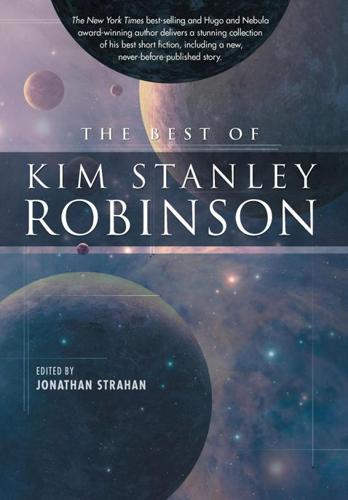
The Best of Kim Stanley Robinson
by
Kim Stanley Robinson
Published 1 Mar 2001
Without vision, reality is… (it’s hard to describe) a sort of void, in which transitory things come to existence when grasped and mouthed and heard; then, when the things fall silent or are dropped, they melt away, they cease to exist. (I wonder if I have not kept a bit of that feeling with me always.) It can be shown that this sense of object permanence must be learned by sighted infants as well—move a toy behind a screen, and very young babies will assume the toy has ceased to exist—but vision (seeing part of a toy [or a person] behind the screen) makes their construction of a sense of object permanence fairly rapid and easy. With the blind child, it is a much harder task; it takes months, sometimes years. And with no sense of an object world, there can be no complementary concept of self; without this concept, all phenomena can be experienced as part of an extended “body.”
…
As we did (my feet jabbing the end of the couch, which was quite broad enough, but a little too short) I arched up and let in the breeze between us (cool on our sweat), leaned down and sucked on first one nipple and then the other— (thus becoming helpless in a sense, a needy infant, utterly dependent [because for the blind from birth, mother love is even more crucial than for the rest of us; the blind depend on their mothers for almost everything, for the sense of object permanence, for the education that makes the distinction between self and world, for the beginning of language, and also for the establishment of a private language that compensates for the lack of sight {if your mother doesn’t know that a sweeping hand means “I want”} and bridges the way to the common tongue—without all that, which only a mother can give, the blind infant is lost; without mother love beyond mother love, the blind child will very likely go mad] so that to suck on a lover’s nipple brings back that primal world of trust and need, I am sure of it) —I was sure of it even then, as I made love to this strange other Mary Unser, a woman as unknown to me as any I had ever spoken with.
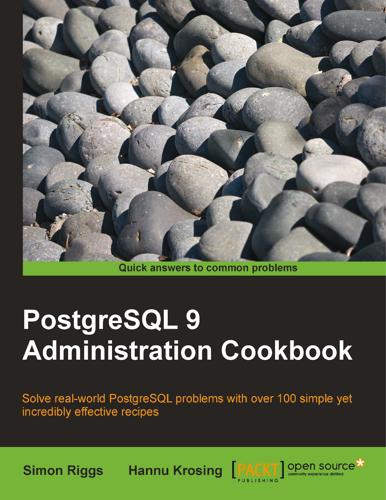
PostgreSQL 9 Admin Cookbook: Over 80 Recipes to Help You Run an Efficient PostgreSQL 9. 0 Database
by
Simon Riggs
and
Hannu Krosing
Published 23 Oct 2010
Once you've created your directory, adding the tablespace is simple, as follows: CREATE TABLESPACE new_tablespace LOCATION '/usr/local/pgsql/new_tablespace'; And, the command to remove the tablespace is also simple, which is: DROP TABLESPACE new_tablespace; 171 Database Administration A tablespace can only be dropped when it is empty, so how do you know when a tablespace is empty? Tablespaces can contain both permanent and temporary objects. Permanent data objects are tables, indexes, and toast objects. We don't need to worry too much about toast objects, because they are created and always live in the same tablespace as their main table, plus, you cannot manipulate their privileges or ownership. Indexes can exist in separate tablespaces, as a performance option, though that requires explicit specification on the CREATE INDEX statement.
…
Moving objects between tablespaces Moving data around between tablespaces may sometimes be required. Getting ready First, create your tablespaces. Once the old and new tablespaces exist, we can issue the commands to move them. How to do it... Tablespaces can contain both permanent and temporary objects. Permanent data objects are tables, indexes, and toast objects. We don't need to worry too much about toast objects, because they are created and always live in the same tablespace as their main table. So if you alter the tablespace of a table, it's toast objects will move also. ALTER TABLE mytable SET TABLESPACE new_tablespace; 174 Chapter 7 Indexes can exist in separate tablespaces, and moving a table leaves the indexes where they are.

Spoiled Brats: Short Stories
by
Simon Rich
Published 14 Oct 2014
My mother stared at me angrily for a moment—then galloped off screaming into the night. “I met with the scientists,” I told my parents the next day. “They said I was the smartest chimp they’d ever seen.” “La-di-da,” my father said. My mother was standing behind him, in her usual grooming position. Neither looked up at me. “They tested me on memory, pattern recognition, and object permanence,” I told them. “There were dozens of chimps, but I scored the highest.” “Good for you,” my father grumbled, his voice thick with sarcasm. Nobody said anything for a while. Eventually, my mother broke the silence. “It was a big day at the shit pile,” she said. “Your father found three grubs.”

Where We Are: The State of Britain Now
by
Roger Scruton
Published 16 Nov 2017
The point was made by the thirteenth-century judge Henry de Bracton, in his influential book on ‘The Laws and Customs of England’, written in Latin around 1220 and revised some thirty years later. The king, Bracton argued, lies below the law since it is the law that appoints him. Bracton was not philosophizing: he was articulating the rooted English understanding of law, as something objective, permanent, and part of the furniture of the country, something not invented but discovered. His argument was repeated and elaborated by the great jurist and Chief Justice, Sir Edward Coke, whose Commentary upon Littleton, published in 1628, staunchly defended the Common Law as binding on all within the kingdom, the king himself included.
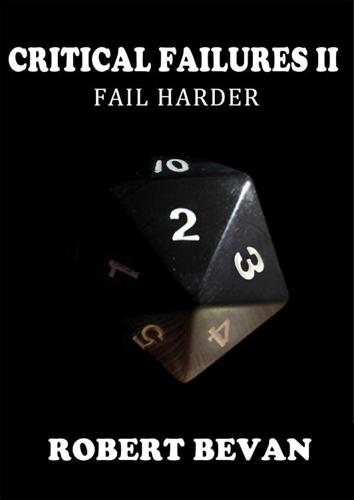
Critical Failures II (Caverns and Creatures Book 2)
by
Bevan, Robert
Published 12 Oct 2013
“You are on the list of people who won’t trip it,” said Julian. Cooper lay down on the floor. “Cool. Well I’m gonna get some sleep too.” “Okay.” Julian sat on the room’s only chair and stared out of the window. The setting sun painted orange clouds on the pink sky. As the sky grew darker, the streetlamps, which he guessed must each contain an object permanently enchanted with a Light spell, began to take over the sun’s job of keeping the city streets lit. After the hustle and bustle of the marketplace died down, Julian scrutinized the few people remaining on the street. None of them looked overly suspicious or threatening… at least not to Julian’s exhausted brain.
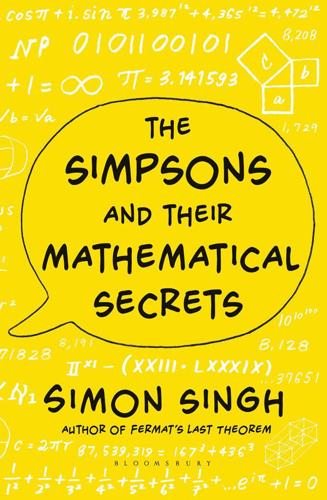
The Simpsons and Their Mathematical Secrets
by
Simon Singh
Published 29 Oct 2013
This gives Firth an Erdős-Bacon number of 7—impressive, but a long way from Reznick’s record. Similarly, Natalie Portman is notable for having an Erdős-Bacon number. She conducted research while she was a student at Harvard University, which led to her becoming a co-author on a paper titled “Frontal Lobe Activation During Object Permanence: Data from Near-Infrared Spectroscopy.” However, she is not identified as Natalie Portman on any research databases, as she published under her birth name, Natalie Hershlag. One of the other co-authors was Abigail A. Baird, who has a link into mathematical research, which results in her having an Erdős number of 4.

Architects of Intelligence
by
Martin Ford
Published 16 Nov 2018
YANN LECUN: There are probably other problems that we do not see at the moment that we’re going to eventually encounter, but one thing I think we’ll need to figure out is the ability that babies and animals have to learn how the world works by observation in the first few days, weeks, and months of life. In that time, you learn that the world is three-dimensional. You learn that there are objects that move in front of others in different ways when you move your head. You learn object permanence, so you learn that when an object is hidden behind another one, it’s still there. As time goes on, you learn about gravity, inertia, and rigidity—very basic concepts that are learnt essentially by observation. Babies don’t have a huge amount of means to act on the world, but they observe a lot, and they learn a huge amount by observing.
…
Elizabeth Spelke is one of the most important people that anybody in AI should know if they’re going to look to humans. She has very famously shown that from the age of two to three months, babies already understand certain basic things about the world, like how it’s made from physical objects in three dimensions that don’t wink in and out of existence. It’s what we typically call object permanence. It used to be thought that that was something that kids came to and learned by the time they were one year old, but Spelke and others have shown that in many ways our brains are born already prepared to understand the world in terms of physical objects, and in terms of what we call intentional agents.

Off the Edge: Flat Earthers, Conspiracy Culture, and Why People Will Believe Anything
by
Kelly Weill
Published 22 Feb 2022
I wanted to ask him whether he knew his exact GPS coordinates, and whether his not knowing them meant that he wasn’t actually standing anywhere, but I remembered that GPS—Global Positioning System—was no good in his model of the universe. Anyway, it was a rhetorical argument. Knowledge does not work this way. For the sake of sanity and advancing beyond a toddler’s grasp of object permanence, we are constantly evaluating information out of our limited fields of view. When a friend relates a funny story, we likely trust that it happened even if we weren’t there to witness it, just as we don’t go around grabbing power lines to ascertain whether they are still delivering electricity.
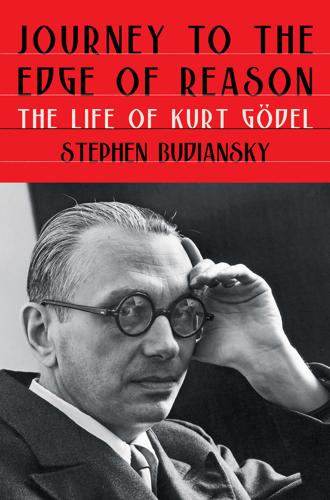
Journey to the Edge of Reason: The Life of Kurt Gödel
by
Stephen Budiansky
Published 10 May 2021
So yes, perhaps in spite of so much that argues against it, Kakania was after all a country for geniuses; and it is probably for that reason it went under.51 A great influence on the thinking of the intelligentsia of “Young Vienna” was the philosophical ideas of the physicist Ernst Mach, named in 1895 to the newly created Chair for History of the Inductive Sciences at the University of Vienna. Rejecting all a priori truth, Mach took empiricism to new extremes: knowledge is based only on appearance, he insisted, and appearances are nothing but “the world of our own sensations.” Thus, there are no such things as objects, permanence, or even reality in any objective sense. Mach’s public lectures were avidly attended by the denizens of Young Vienna, who credited his ideas as a wellspring of much of their artistic sensibility. The polymath Egon Friedell—music critic, philosopher, cabaret performer, playwright, among other things—asserted that in choosing to depict light over things, Klimt and his fellow modernists had simply “painted Mach.”
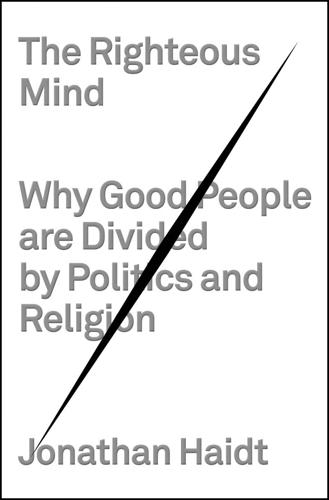
The Righteous Mind: Why Good People Are Divided by Politics and Religion
by
Jonathan Haidt
Published 13 Mar 2012
“The Evolution of Religion: How Cognitive Byproducts, Adaptive Learning Heuristics, Ritual Displays, and Group Competition Generate Deep Commitments to Prosocial Religions.” Biological Theory 5:18–30. Ault, J. M. J. 2005. Spirit and Flesh: Life in a Fundamentalist Baptist Church. New York: Knopf. Axelrod, R. 1984. The Evolution of Cooperation. New York: Basic Books. Baillargeon, R. 1987. “Object Permanence in 3 1/2- and 4 1/2-Month-Old Infants.” Developmental Psychology 23:655–64. __________ 2008. “Innate Ideas Revisited: For a Principle of Persistence in Infants’ Physical Reasoning.” Perspectives on Psychological Science 3:2–13. Balcetis, E., and D. Dunning. 2006. “See What You Want to See: Motivational Influences on Visual Perception.”
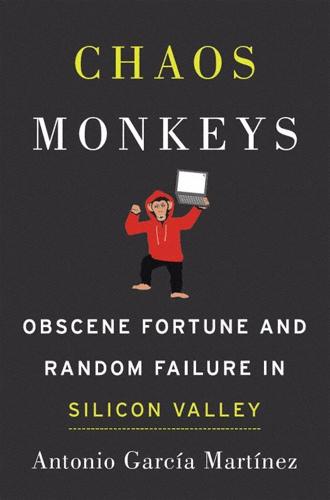
Chaos Monkeys: Obscene Fortune and Random Failure in Silicon Valley
by
Antonio Garcia Martinez
Published 27 Jun 2016
And yet, when we get a penis-enlargement email, nobody blames Google for providing Gmail, does he? Nor do you blame AT&T for the marketing call that distracted you from Game of Thrones. The only difference is that while people commonly make phone calls and write emails, few if any people address and post an ad. Like infants who haven’t learned object permanence yet, the Facebook whiners see an ad, the Facebook logo, and assume it’s all connected. Make the ad go away, and they don’t even think about it. Of course, what they should really be thinking about is how that ad got addressed, and what the advertiser, and not Facebook, knows about them. Facebook is actually the least of their worries, and it’s about the only dog in the fight that ultimately cares about the user.
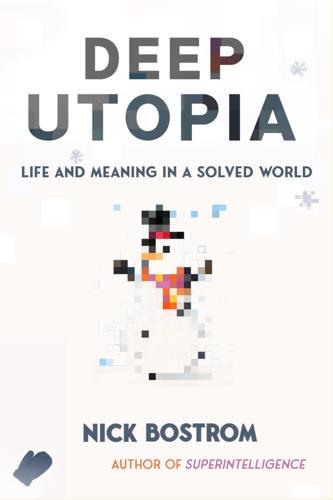
Deep Utopia: Life and Meaning in a Solved World
by
Nick Bostrom
Published 26 Mar 2024
Maybe we can get some grip on this if we compare such a hypothetical transition-to-an-era-of-perpetual-much-lower-interestingness to the transition we have already undergone individually, from our own infancy and childhood to our adulthood. As we observed, for most of us, this transition involved a drastic decline in a certain kind of interestingness. We are no longer regularly making discoveries of the profoundness-level of object permanence or the existence of other minds. Even this very lecture series, despite my best efforts to put in place a justification for the exorbitant tuition fees that many of you are paying, or your parents are—and which we are compelled to charge in order to fund the construction of the university’s new campus, which will be exclusively devoted to accommodating our exponentially growing administrative staff; not to mention the new ballpark with seating for twenty thousand, without which it would scarcely be possible to give a young person an adequate foundation— my efforts with this lecture series, I dolefully concede, will most likely fail to deliver the interestingness value once afforded to you by that colorful toy xylophone you received when you turned one.

The Long Game: China's Grand Strategy to Displace American Order
by
Rush Doshi
Published 24 Jun 2021
The first tactic was to ensure that APEC accepted the principle of non-discrimination in trade, which it saw as a shortcut to the “unconditional application of most favored nation trade status among APEC members.”73 A review of its negotiating positions revealed that “China has sought to achieve multilaterally a policy objective—permanent MFN status from the United States—it has not been able to achieve bilaterally.”74 APEC ambassador Wang Yusheng conceded in his memoirs that “the principle of non-discrimination was actually a matter between China and the United States,” but he also noted that multilateralizing it was useful because “other members [of APEC] sympathized with and supported us to varying degrees.”
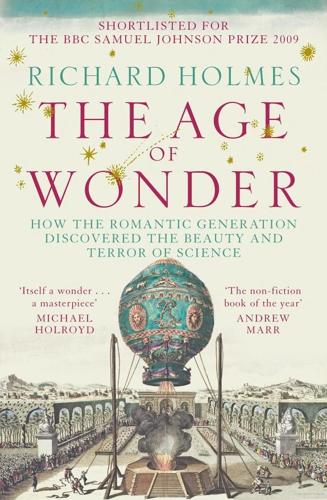
The Age of Wonder
by
Richard Holmes
Published 15 Jan 2008
We look for a time that we may reasonably expect, for a bright day of which we already behold the dawn.’150 But this was not quite all. Davy’s final claim for science was an extraordinary one, and must have much struck Coleridge. Science was psychologically, even spiritually, therapeutic. ‘It may destroy diseases of the imagination, owing to too deep a sensibility; and it may attach the affections to objects, permanent, important, and intimately related to the interests of the human species.’ The value of science was, in this sense, universal, ‘even to persons of powerful minds’, whose primary interests were ‘literary, political or moral’. It strengthened the habit of ‘minute discrimination’, and encouraged a language of ‘simple facts’.
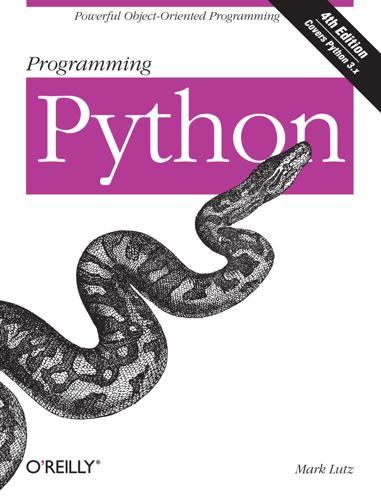
Programming Python
by
Mark Lutz
Published 5 Jan 2011
In recent Python releases, a dictionary iterator produces one key in a for loop each time through (for compatibility with earlier releases, we can also call the db.keys method explicitly in the for loop rather than saying just db, but since Python 3’s keys result is a generator, the effect is roughly the same): >>> for key in db: print(key, '=>', db[key]['name']) bob => Bob Smith sue => Sue Jones >>> for key in db: print(key, '=>', db[key]['pay']) bob => 30000 sue => 50000 To visit all records, either index by key as you go: >>> for key in db: print(db[key]['name'].split()[-1]) db[key]['pay'] *= 1.10 Smith Jones or step through the dictionary’s values to access records directly: >>> for record in db.values(): print(record['pay']) 33000.0 55000.0 >>> x = [db[key]['name'] for key in db] >>> x ['Bob Smith', 'Sue Jones'] >>> x = [rec['name'] for rec in db.values()] >>> x ['Bob Smith', 'Sue Jones'] And to add a new record, simply assign it to a new key; this is just a dictionary, after all: >>> db['tom'] = dict(name='Tom', age=50, job=None, pay=0) >>> >>> db['tom'] {'pay': 0, 'job': None, 'age': 50, 'name': 'Tom'} >>> db['tom']['name'] 'Tom' >>> list(db.keys()) ['bob', 'sue', 'tom'] >>> len(db) 3 >>> [rec['age'] for rec in db.values()] [42, 45, 50] >>> [rec['name'] for rec in db.values() if rec['age'] >= 45] # SQL-ish query ['Sue Jones', 'Tom'] Although our database is still a transient object in memory, it turns out that this dictionary-of-dictionaries format corresponds exactly to a system that saves objects permanently—the shelve (yes, this should probably be shelf, grammatically speaking, but the Python module name and term is shelve). To learn how, let’s move on to the next section. * * * [2] No, I’m serious. In the Python classes I teach, I had for many years regularly used the name “Bob Smith,” age 40.5, and jobs “developer” and “manager” as a supposedly fictitious database record—until a class in Chicago, where I met a student named Bob Smith, who was 40.5 and was a developer and manager.